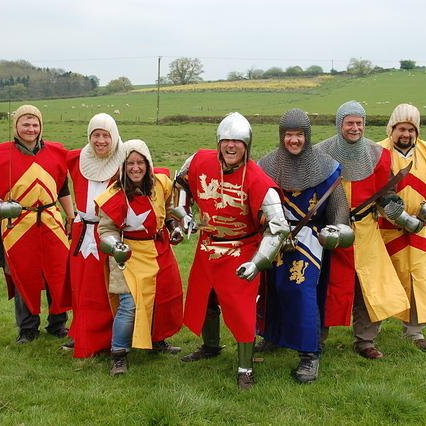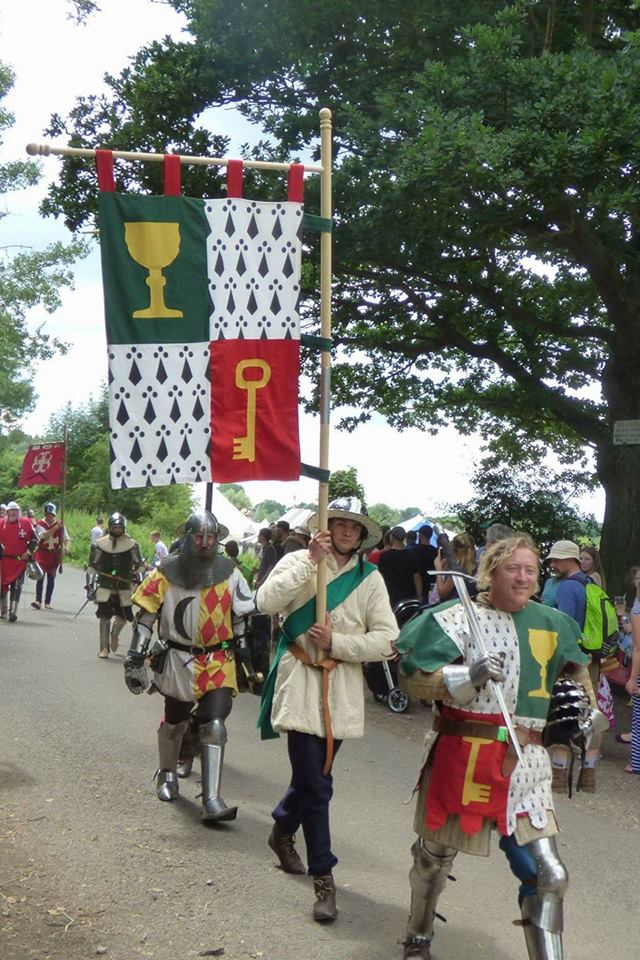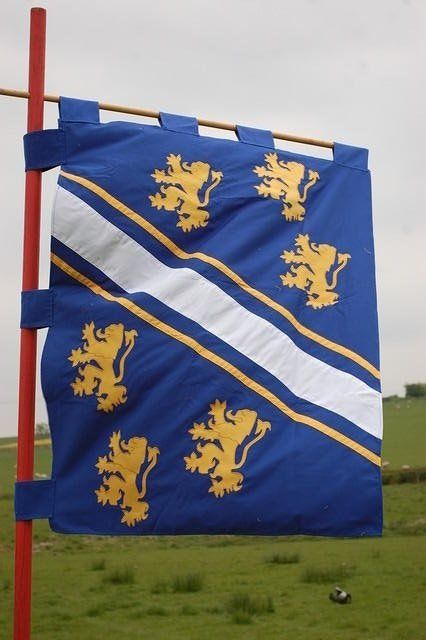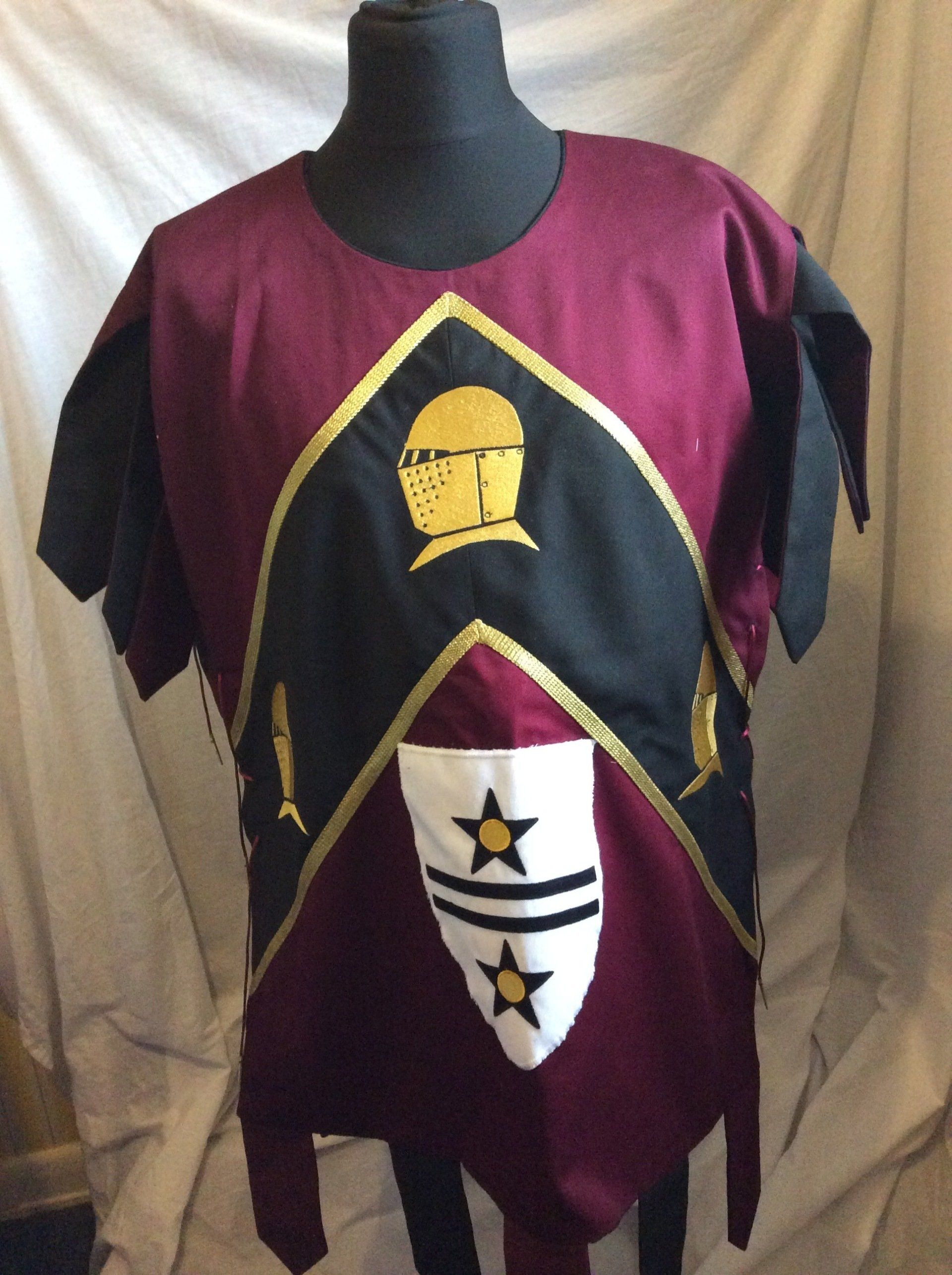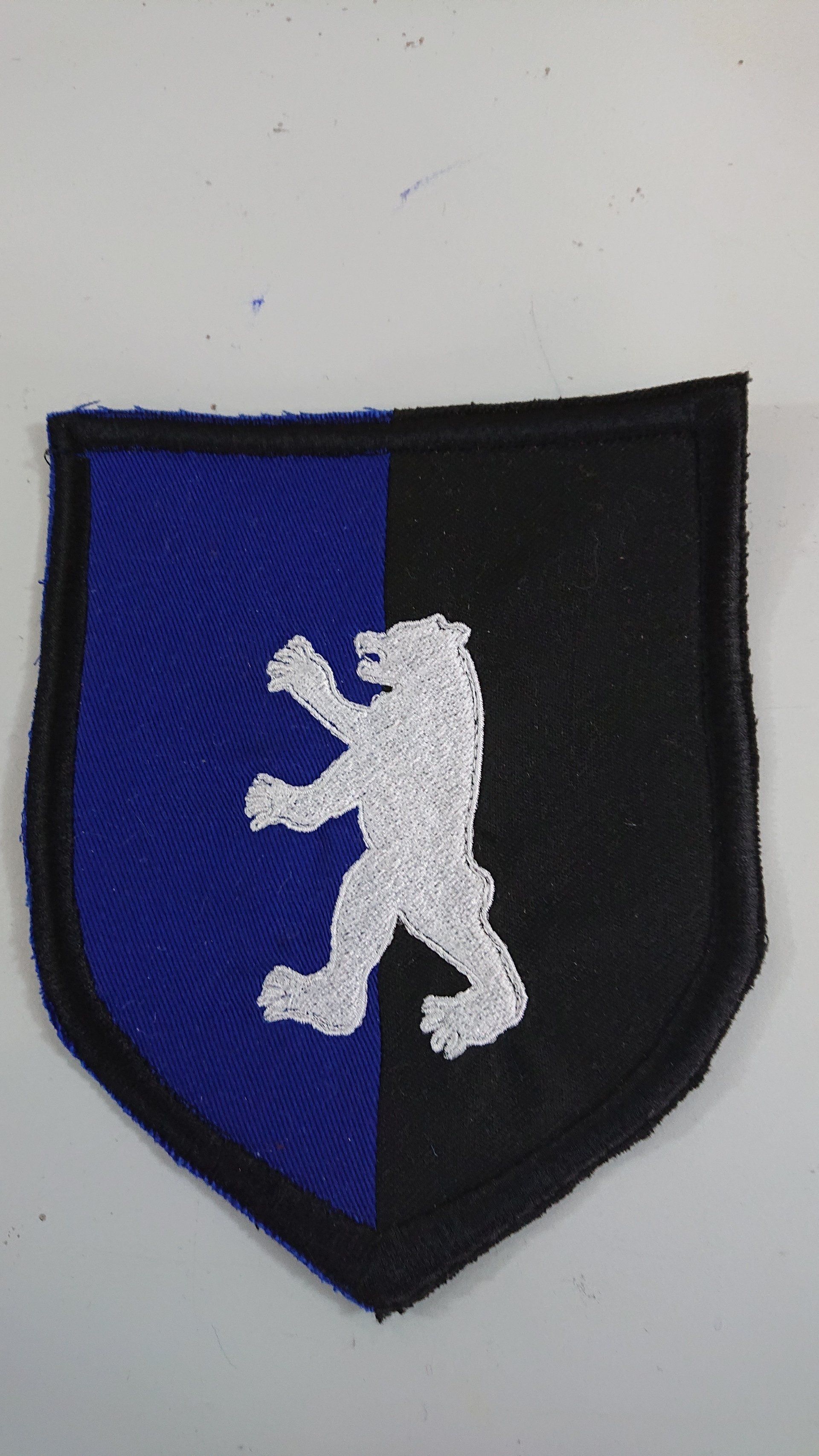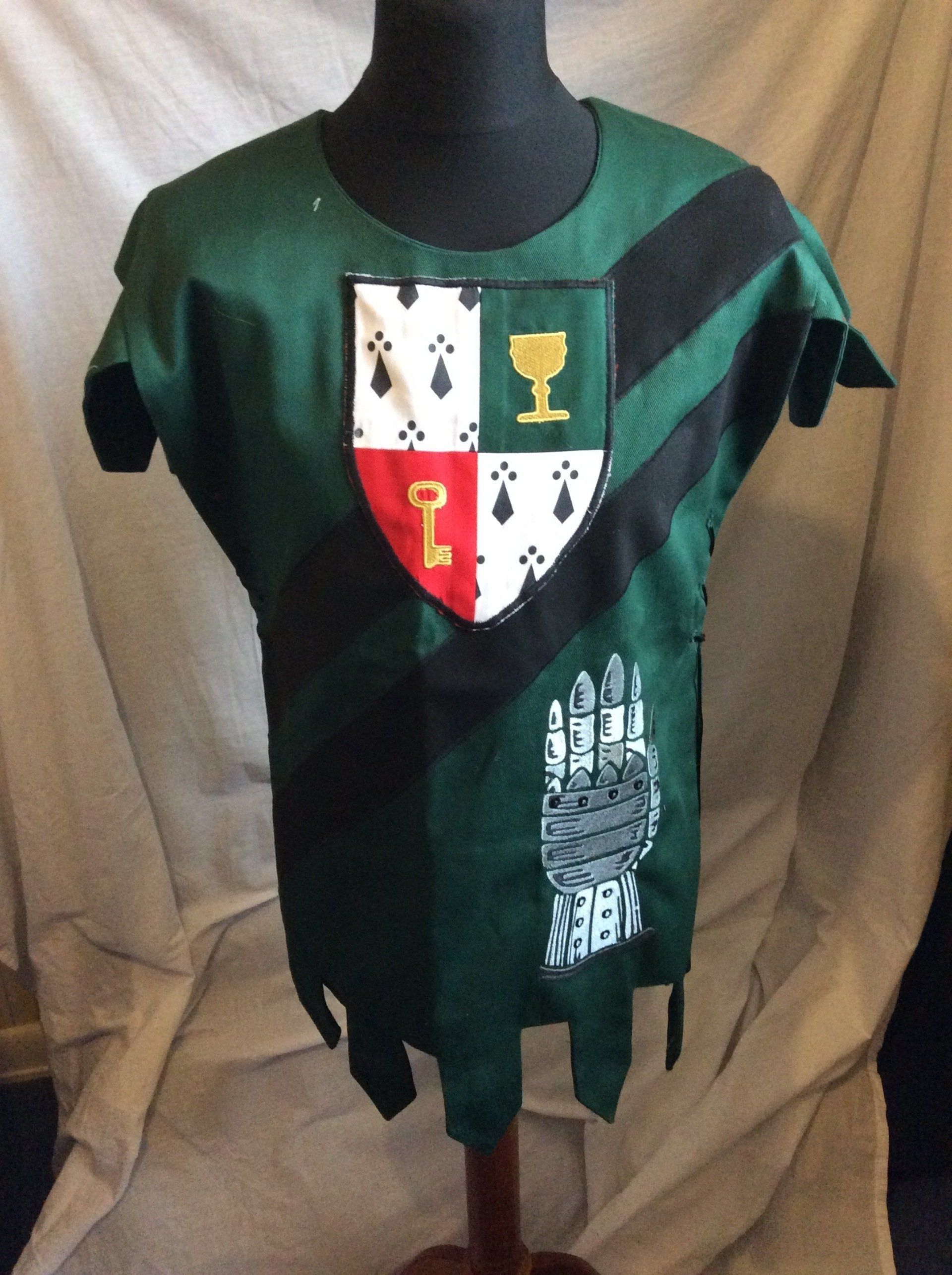

Mens Clothing: Heraldry
Heraldry
Heraldry was predominately used for 2 reasons.
The first is about showing people who you are. In England it started in the later 1100s, when knights began to wear helmets which covered their faces, and they couldn't be recognised. So they began to paint unique combinations of colours, shapes and animals, called 'arms', on their shields and banners. Only one person was allowed to use these arms, so when people saw a knight wearing them in a battle or tournament, they could tell who he was. Each coat of arms should be unique.
The second reason is to show which Lord you belong to. This could be a garment in your lords heraldry or your lords heraldry badge on your own cloth.
The main rules of heraldry components are as follows
- The arms should be distinguishable at a distance, so the majority of the pieces should be large, simple and composed of a very few tinctures (colours)
- The metals colours are considered Gold (gold/yellow) and Silver (silver/white)
- The five earth colours are Red, Blue, Green and Black, plus the rare Purple.
- The main fur prints used are Ermine (Black on white) and Vair (blue and white)
No similar type colours (Ie earth and earth) should touch. There are some other rules but those are the main ones.
Banners & Pendents
These would have had the persons heraldry on them so that people would have known on the battle field who was there. They were also used for knowing who was in charge of a castle, as sometimes castles changed hands frequently. It also made spotting that local celebrity lord who was staying in the local village or towns hotel easier, as they would be hung out of the window.
To decorate a banner or pendant it would have been embroidered, appliquéd or painted.
Surcoats
These were garments warn over the armour with the persons heraldry on them, so that people knew who they were fighting. Surcote (sometimes called a tabard) started in the 11th century long with openings both sides. They then got shorter at the back making it easier to ride in. By the 14th century they are short both front and back (knee length), then as we go through the 14th century they get shorter up to hip length. By the end of the 14th Century they are hip length and fitted to the armour shape.
Some were also plain with a badge showing the heraldry of the household they belonged to. They could also be used indoors on squires, as garments showing the heraldry of the household they belonged to.
Badges
Badges were used mainly for squires, servants and other lower ranks to show which household they belonged to.
They would be large enough for people to spot them easily from a distance. They would normally be on the centre of the chest and also the back.
